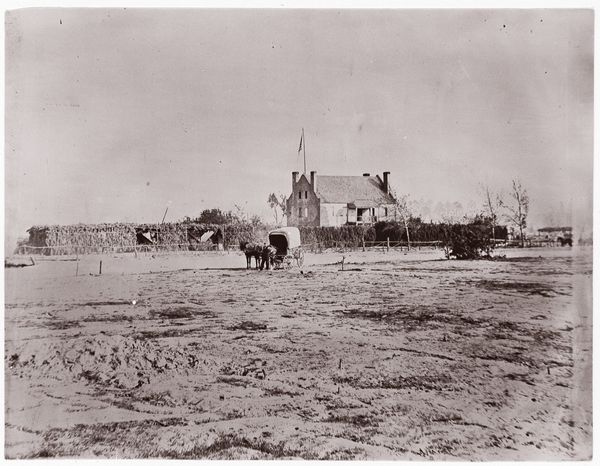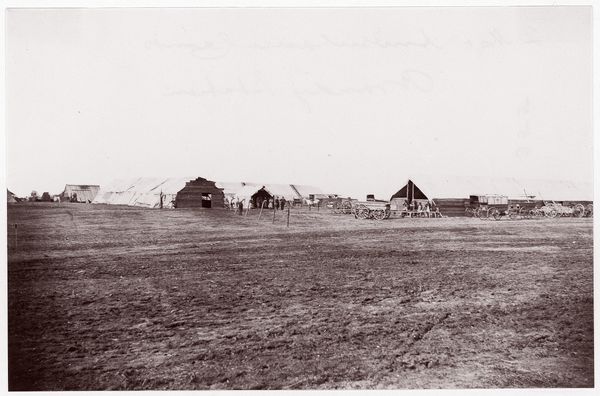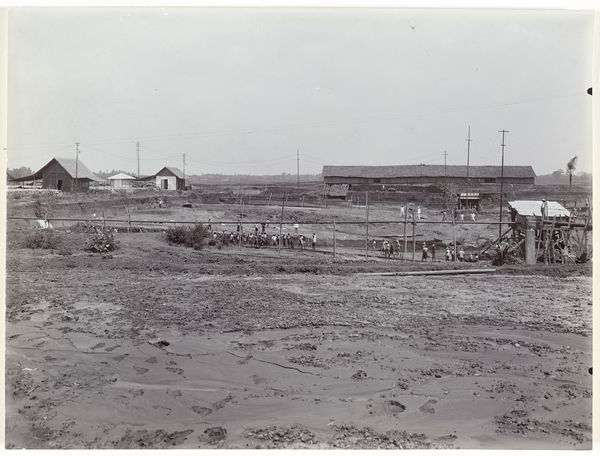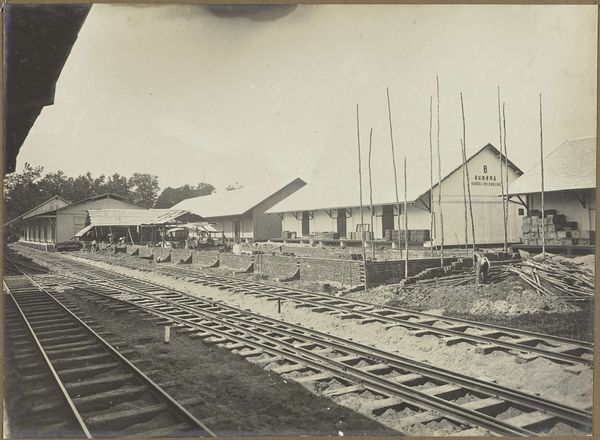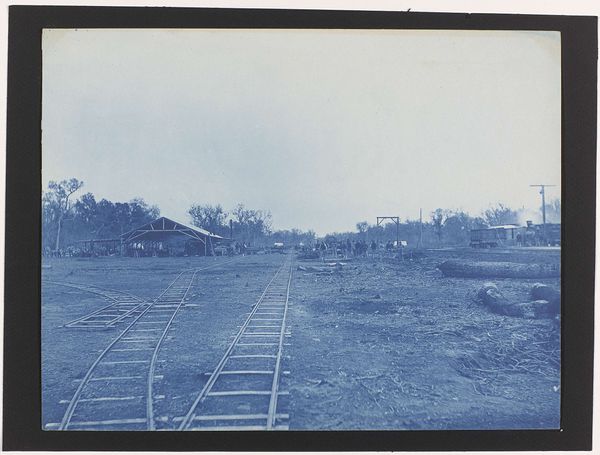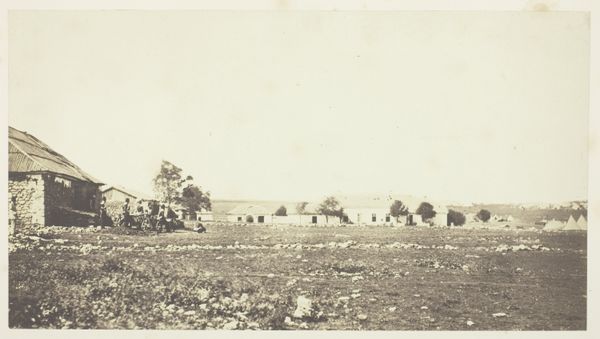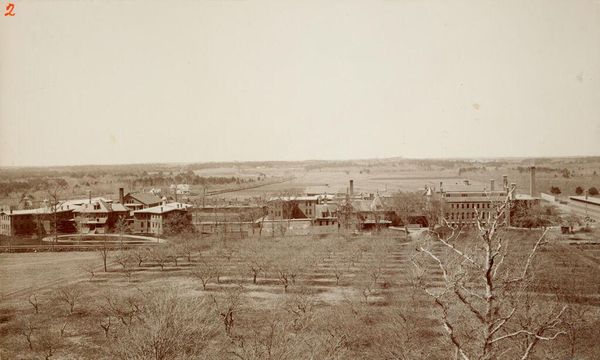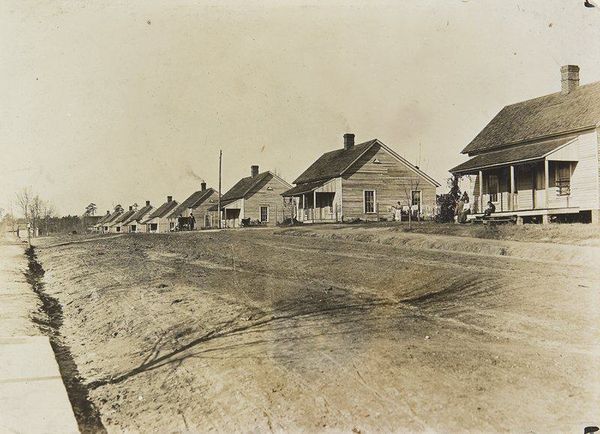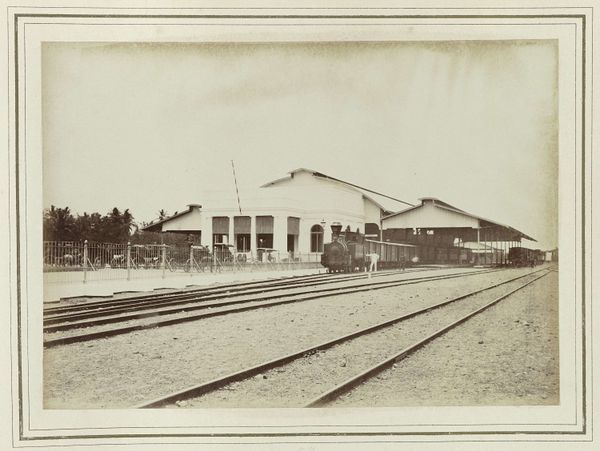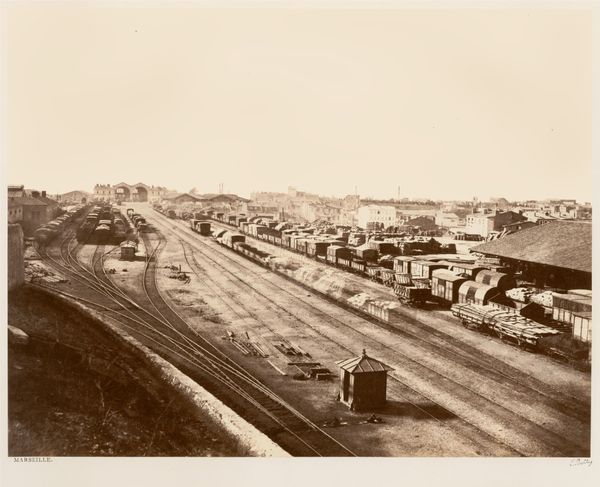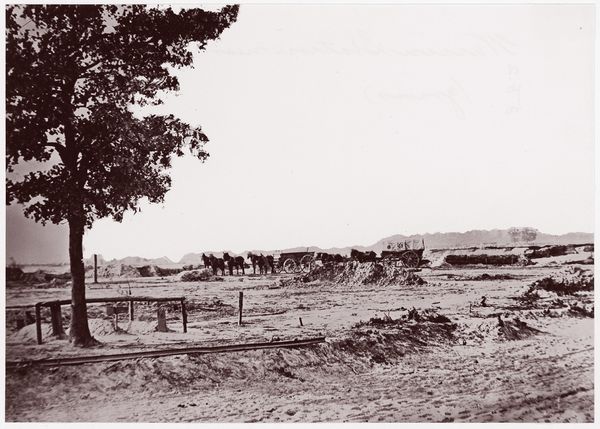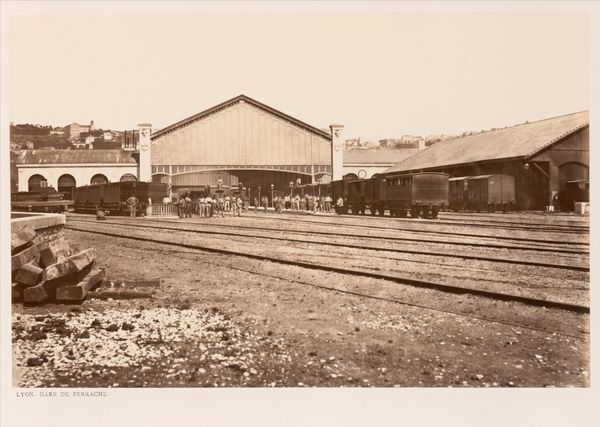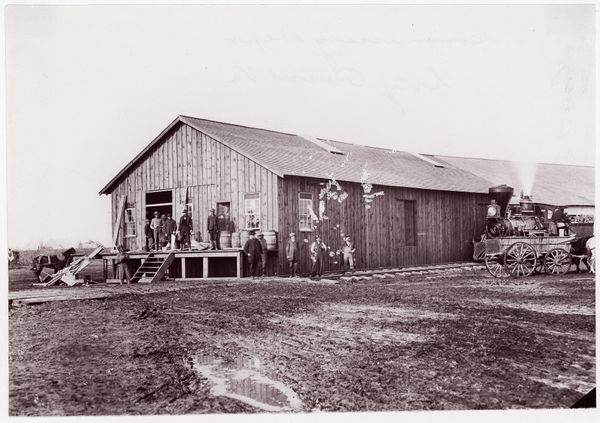![[Warren Station, Front of Petersburg, Virginia] by Timothy O'Sullivan](/_next/image?url=https%3A%2F%2Fd2w8kbdekdi1gv.cloudfront.net%2FeyJidWNrZXQiOiAiYXJ0ZXJhLWltYWdlcy1idWNrZXQiLCAia2V5IjogImFydHdvcmtzL2ZlOWZjMDYyLWY2ZjctNGYxNy05OTMzLTg5NzgwN2E0MGQ5ZC9mZTlmYzA2Mi1mNmY3LTRmMTctOTkzMy04OTc4MDdhNDBkOWRfZnVsbC5qcGciLCAiZWRpdHMiOiB7InJlc2l6ZSI6IHsid2lkdGgiOiAxOTIwLCAiaGVpZ2h0IjogMTkyMCwgImZpdCI6ICJpbnNpZGUifX19&w=3840&q=75)
[Warren Station, Front of Petersburg, Virginia] 1861 - 1865
0:00
0:00
photography, gelatin-silver-print
#
black and white photography
#
war
#
landscape
#
photography
#
gelatin-silver-print
#
monochrome photography
Copyright: Public Domain
Curator: Standing before us is Timothy O'Sullivan's gelatin-silver print, "[Warren Station, Front of Petersburg, Virginia]," taken sometime between 1861 and 1865. Editor: The bleakness hits you immediately. A vast, almost lunar landscape bisected by those train tracks, then rows of dark, squat structures in the distance. It speaks volumes of desolation. Curator: O'Sullivan’s work for the Mathew Brady studio during the Civil War redefined how war was visualized. The image presented a perspective removed from romantic heroism. What were the economic conditions required to supply the industrial might that fueled these long campaigns? Consider, the railroads pictured symbolize infrastructure built on exploited labor, enabling the movement of resources and troops. Editor: It's a perspective rooted in labor as the engine for war and an example of how photography brought an urgent immediacy that challenged the idealized war art of previous eras. I wonder how this impacted the socio-political conversation back home. Curator: Mass media shifted cultural perception and engagement with distant conflict. Think about how institutions displayed work that changed from battle narratives, as such, war reports influenced political discourse by visually presenting a war of attrition that strained a nation and its material foundations. Editor: Absolutely, there’s an uncomfortable power in the photograph's plainness. It avoids glory or overt sentimentality, yet it demands attention to the brutal, industrial scale of conflict—it really is about war as commodity. The scale and materiality depicted, it all makes it starkly modern and disturbing. Curator: And those dark structures, likely barracks, remind us of the vast number of soldiers and the materials it took to sustain them for the campaign. Every tent, rail and meal reflects extraction from somewhere, manufactured and placed at cost of the most basic resources and human dignity. Editor: Considering its materials—a simple silver gelatin print—this photograph served both a documentarian purpose and entered the space of fine art. That itself says something about the evolution of how art participates within culture. Curator: Agreed, this piece underscores not just war’s events, but its embeddedness within a system of production and distribution that irrevocably altered American life. Editor: A poignant reminder of how deeply entangled art is within social structures. Curator: Precisely, its influence ripples outwards through historical events and to modern times, provoking continued dialogue about human cost and manufacture within warfare.
Comments
No comments
Be the first to comment and join the conversation on the ultimate creative platform.

